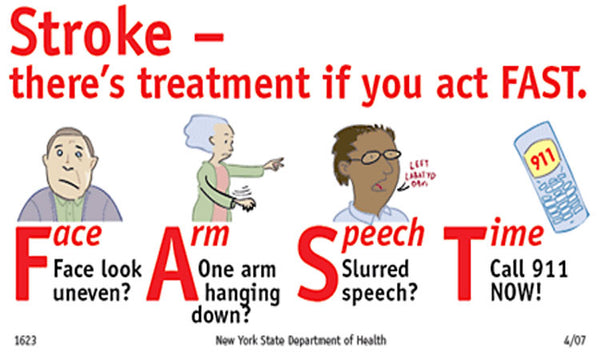Quick recognition and fast treatment can be the game-changer for someone facing a stroke, and that's why I'm backing the American Heart Association's American Stroke Month this May. Let's dive into their new initiative, "Together To End Stroke," which aims to educate everyone about the Risk Factors, Prevention, Warning Signs, and early Treatment of strokes.
Now, let me share some jaw-dropping statistics from the American Heart Association:
- Every 40 seconds, someone in the United States has a stroke.
- Stroke is the #3 killer for women and the #5 killer for men.
- There are over 750,000 strokes each year.
- A whopping 6.8 million individuals over 20 years old have experienced a stroke.
These numbers hit hard, don't they? It's why we all need to know how to recognize and handle strokes. The information I'm about to share could genuinely make a significant difference for someone you care about during a crisis.

So, if you ever find yourself or someone you know in a stroke situation, the first thing to do is call 9-1-1 – no second-guessing. Understanding the early warning signs is crucial, and that's where the acronym FAST comes in handy:
F- Face Drooping, when one side of the face droops or feels numb. Ask the victim to smile. If the smile is uneven this could be a sign of a stroke.
A- Arm Weakness, when one arm is weak or numb. Compare by having the victim raise their arms or grip your hands.
S- Speech Difficulty, when speech is slurred or the victim is hard to understand or unable to speak.
T- Time to call 9-1-1, when someone shows any of these symptoms call 9-1-1 at once.
Taking quick action can lead to the use of tPA, a clot buster used in about 85% of stroke cases in the U.S. Early detection and fast treatment based on these warning signs can minimize long-term effects and significantly improve survival rates.
In line with our commitment to safety and well-being, I'm extending an invitation to a FREE online CPR, First Aid, and AED course. This knowledge could be a lifesaver in various situations, not just during strokes. Visit https://www.onlinecprskills.com/ to enroll today.
In a nutshell, understanding the signs of a stroke and acting promptly can save lives. By spreading awareness and supporting the "Together To End Stroke" initiative, we can all play a part in creating a healthier and safer community.

